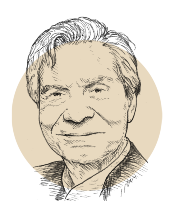France, like the rest of Europe, was for a long time white and Christian. This is no longer completely the case. As proof I submit the audacity shown by President Macron in selecting the members of his new government. The new prime minister is a woman, which is common in northern Europe but not southern Europe. It is only the second time France has had a female prime minister (Edith Cresson was the first). She is of Jewish origin, which is not totally new (France has had two previous Jewish prime ministers, Léon Blum and Pierre Mendès-France), but this time, unlike in the past, no one has a problem with it. Although anti-Zionism has not disappeared, antisemitism has become insignificant and has no intellectual or political influence. A still greater innovation is the appointment of the new minister of national education and youth, Pap Ndiaye, who is Black and of Senegalese origin. Up until now he had been a well-known academic, the first in France to relate the history and describe the condition of Africans in France. Now he is responsible for teaching French youth that it is possible to be Black and French. His nomination has not provoked any significant racist backlash.
Meanwhile, the new overseas minister stated in her first speech that it was time to honestly confront France’s responsibility in the history of African slavery. To be sure, President Macron had already addressed this issue during a trip to Burkina Faso, when he said that the colonization of Africa was a “crime against humanity.” His speech, which represented a total rupture with French narcissism on this subject, went strangely unnoticed, even though it marked a historic turning point. The French used to believe – as I was taught in school – that we had brought civilization to Africa. Finally, there is the new culture minister, Rima Abdul Malak, of Arab origin and born in Lebanon. France’s new face is thus Jewish, Arab, and African. Recall as well that the mayor of Paris is of Spanish origin, but Spain and France are traditionally European. Among our neighbors, it should be noted that the mayor of London is of Pakistani origin and that the British finance minister is of Indian origin.
How are we to interpret this new diversity within the leading political class in France and Europe? Are we giving in to the intellectual fashion of multiculturalism? Is it possible that by changing their skin color, culture, and tradition, France and Europe are at risk of losing their soul? This is what some fear, but history teaches the contrary: Europe has never been an ethnicity and has never been closed in on itself. For starters, a number of Roman emperors came from elsewhere, natives of Spain (Trajan and Hadrian), North Africa (Septimius Severus), and Turkey (Valens). This did not make them any less Roman. By reviving this ancient tradition, France is not impoverished but enriched by these imports from other places. And it is not at all the case that Europe is decomposing, but rather the rest of the world is becoming more like Europe. No one migrates voluntarily from Europe to Africa or Syria; the movement is in the opposite direction. Immigrants do not aspire to recreate their impoverished way of life or to impose their customs on the European continent. For every crazed Jihadist there are millions of Arabs and Africans seeking democracy and a secular government. Consider the Ukrainians who are now fighting with energy and desperation to be recognized as Europeans.
Pap Ndiaye’s first public statement was to thank the French republican school system that shaped him. He is proud to be the product of that system and wants to make sure that everyone, whatever their origins, can benefit from it. We wish him success in this endeavor. We also ask that he not sacrifice his Senegalese origins, as his African contribution would certainly help enrich French culture, just as French literature and music are ceaselessly enriched by Francophone voices from all continents.
Is my approach too optimistic? Doubtless it is marked by my own personal story: I am a child of France’s republican school system, while my father came from Poland and my mother from Ukraine. But beyond my personal case – which is not at all unusual and has been repeated millions of times across our continent – I have noticed that the most prosperous and freest countries are also the most diverse: Germany has millions of Turks and Syrians; France has millions of Poles, Spaniards, Portuguese, Italians, Lebanese, Arabs, and Africans; and the U.K., a reputedly xenophobic country, has in fact integrated millions of Indians and West Indians. The poorest and least liberal European countries, on the other hand, are the ones that claim to have the strongest attachment to their ethnicity: Hungary, Poland, Serbia.
Let us love diversity, because it enriches us both economically and morally. This path may prove to be sown with pitfalls and obstacles, as it is in the United States, but tomorrow’s world will be more interesting because it will be multicolored.
Editorial published in the July 2022 issue of France-Amérique. Subscribe to the magazine.












